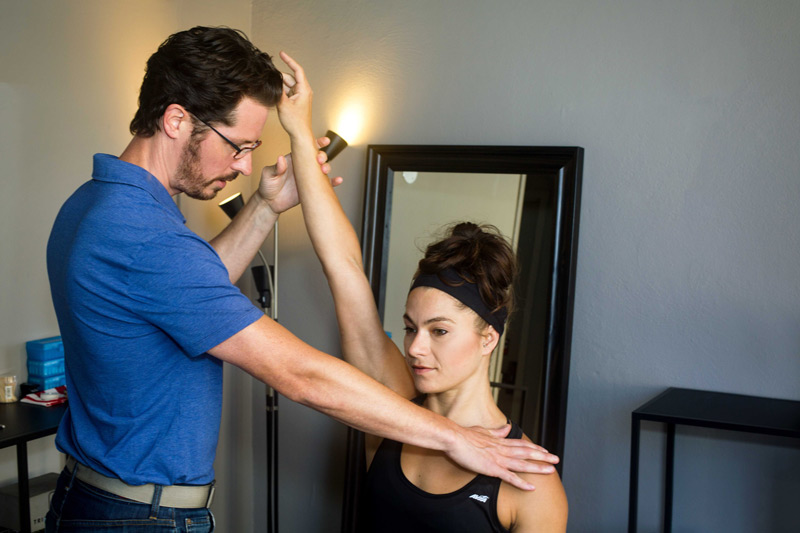Proprioceptive Deep Tendon Reflex® (P-DTR®)
What is P-DTR®?

Proprioceptive Deep Tendon Reflex Therapy (P-DTR) is a revolutionary neuromuscular treatment method that addresses a largely overlooked system of the body: the proprioceptive system. The proprioceptor system gives our brain information about what’s going on inside and outside of our body – it lets us know we’re okay or if we need to adjust what we’re doing to protect ourselves. Akin to software programming for the body, P-DTR®’s system addresses pain, dysfunction, and weakness by resetting imbalances in the body’s nervous system. Does something hurt? Our receptor system, AKA our hardwiring, keeps our body informed and protected from the environment around us when, for instance, we are exposed to heat, cold, pressure, vibration, muscle or joint stretch, etc. It is our hardwiring that provides us with a “fight or flight” system that becomes activated and initiates our body to pull away from pain.
What if the system that tells us about our environment doesn’t shut off? Imagine if you had a car alarm that went off every time the wind blew. Or worse, the alarm sounded all the time and wouldn’t shut off at all. This is what happens to many people in pain, whether acute or chronic.
P-DTR®’s History
P-DTR®’s founder is Dr. Jose Palomar, orthopedic surgeon and diplomate in Applied Kinesiology. During his career, he saw a problem with the standard medical model. Patients would come in with pain and, as an orthopedic surgeon, he had a relatively small arsenal of tools in which to treat the patient.
Drugs: Doctors can give drugs to reduce the pain or swelling, but this does not always fix the problem. Furthermore, the possible negative effects of the drugs present the body with then another problem.
Physical therapy: While this can help in many patients, the success rate is not consistent.
Surgery: Surgery is needed in many cases "IF" there is a "hardware problem". However, Dr. Palomar has come to discover that the majority of people in pain have “software” problems and not any real damage of the “hardware”. To perform a surgery on a patient with a software problem only yields them again with two problems, the initial problem and the new trauma to the body from the surgery.

Dr. Palomar pursued his interest in, what he now refers to as, the “software” of the human body, and became a Diplomate in Applied Kinesiology from the International College of Applied Kinesiology (ICAK). He has contributed eighteen research papers, accepted for inclusion, in ICAK-USA Proceeding. He also furthered his understanding of Neurology through the Carrick Institute on Clinical Neurology. He found that these techniques offered tools to further help his patients in-office.
Dr. Palomar began investigations into the science behind these types of bodywork and discovered the receptor system of the body. P-DTR® was born and continues to grow as we continue to learn more about the brain-body connection. Dr. Palomar has methodically mapped out the “rules” of the body – normal and abnormal responses of the body to various stimuli, allowing the body to either function properly or cause pain and weakness. Ultimately, he uncovered what was needed to re-write the code of pain and weakness: showing the brain the problem in a way it understands. This is the simplicity of the P-DTR® approach.
What is a P-DTR® session like?
Through gentle manual muscle tests, a P-DTR® practitioner determines if muscles are inhibited or not functioning properly. Dysfunctions can be in muscle, tendons, ligaments, fascia, organs, and nuclei of the brain. Then, through a patented system of neurological stimuli, the main dysfunction and its compensator are determined. By showing the brain the dysfunction in this context and eliciting a reflex of the body, the brain can bring the previously dysfunctional receptors back to a normal, healthy level. This restores function instantly and pain is eliminated.
